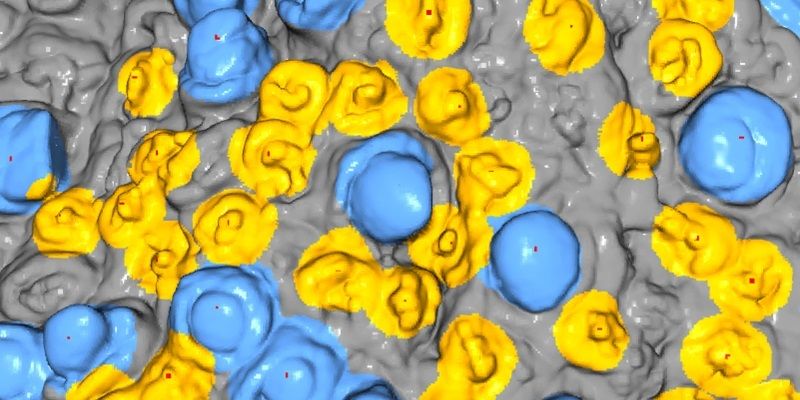
Artificial Intelligence and 3D images have revealed that the surface of the tongue is unique to each of us, a new study suggests.
The results offer an unprecedented insight into the biological make-up of the tongue’s surface and how the sense of taste and touch differ from person to person.
The research has potential for discovering individual food preferences, developing healthy food alternatives and early diagnosis of oral cancers in the future, experts say.
Techniques developed for the study, undertaken by researchers at the University of Leeds and University of Edinburgh, could be used to identify very small changes in the structure of other biological surfaces, to pinpoint early signs of disease.
Senior author Professor Rik Sarkar, Reader in the School of Informatics at the University of Edinburgh, said: “This study brings us closer to understanding the complex architecture of tongue surfaces.
“We were surprised to see how unique these micron-sized features are to each individual (where a micron is one millionth of a metre). Imagine being able to design personalized food customised to the conditions of specific people and vulnerable populations and thus ensure they can get proper nutrition whilst enjoying their food.”
The human tongue is a highly sophisticated and complex organ, with a surface made of hundreds of small buds known as papillae that assist with taste, talking and swallowing.
Professor Anwesha Sarkar, from the School of Food Science and Nutrition at Leeds and one of the co-authors, said: “We knew from our previous work that tongue surfaces are complex with various forms as well as spatial distribution of papillae. However, discovering that the papillae are so unique to people was an exciting finding. I think it will open new research avenues on how such uniqueness in papillae affects perception.”
The study - “Machine learning and topological data analysis identify unique features of human papillae in 3D scans” - has been published in the journal Scientific Reports.
Mushroom-shaped fungiform papillae hold the taste buds whereas the crown-shaped filiform papillae give the tongue its texture and sense of touch.
The taste function of the fungiform papillae has been well researched, but little is known about the difference in shape, size and pattern of both forms of papillae between individuals.
As part of the study, the researchers trained artificial intelligence (AI) computer models to learn from three-dimensional microscopic scans of the human tongue, showing the unique features of papillae.
They fed data from over two thousand detailed scans of individual papillae - taken from silicone moulds of fifteen people’s tongues - to the AI tool.
The AI models were designed to gain a better understanding of individual features of the participants’ papillae and to predict the age and gender of each volunteer.
The team used small volumes of data to train the AI models about the different features of the papillae, combined with a significant use of topology, a branch of mathematics which studies how certain spaces are structured and connected.
This enabled the AI tool to predict the type of papillae to within 85 per cent accuracy and to map the position of filiform and fungiform papillae on the tongue’s surface.
Remarkably, the papillae were also found to be distinctive across all fifteen subjects and individuals could be identified with an accuracy of 48 per cent from a single papilla.
Professor Rik Sarkar added: “We are now planning to use this technique of combining AI with geometry and topology to identify micron-sized features in other biological surfaces.
“This can help in early detection and diagnosis of unusual growths in human tissues.”
Lead author, Rayna Andreeva, PhD student at the Centre for Doctoral Training (CDT) in Biomedical AI at the University of Edinburgh, said: “It was remarkable that the features based on topology worked so well for most types of analysis, and they were the most distinctive across individuals. This needs further study not only for the papillae, but also for other kinds of biological surfaces and medical conditions.”
The study received funding from the United Kingdom Research and Innovation (UKRI) CDT in Biomedical AI and European Research Council (ERC) under the European Union's Horizon 2020 research and innovation program.
Further details
Top image: courtesy of Professor Rick Sarkar, University of Edinburgh.